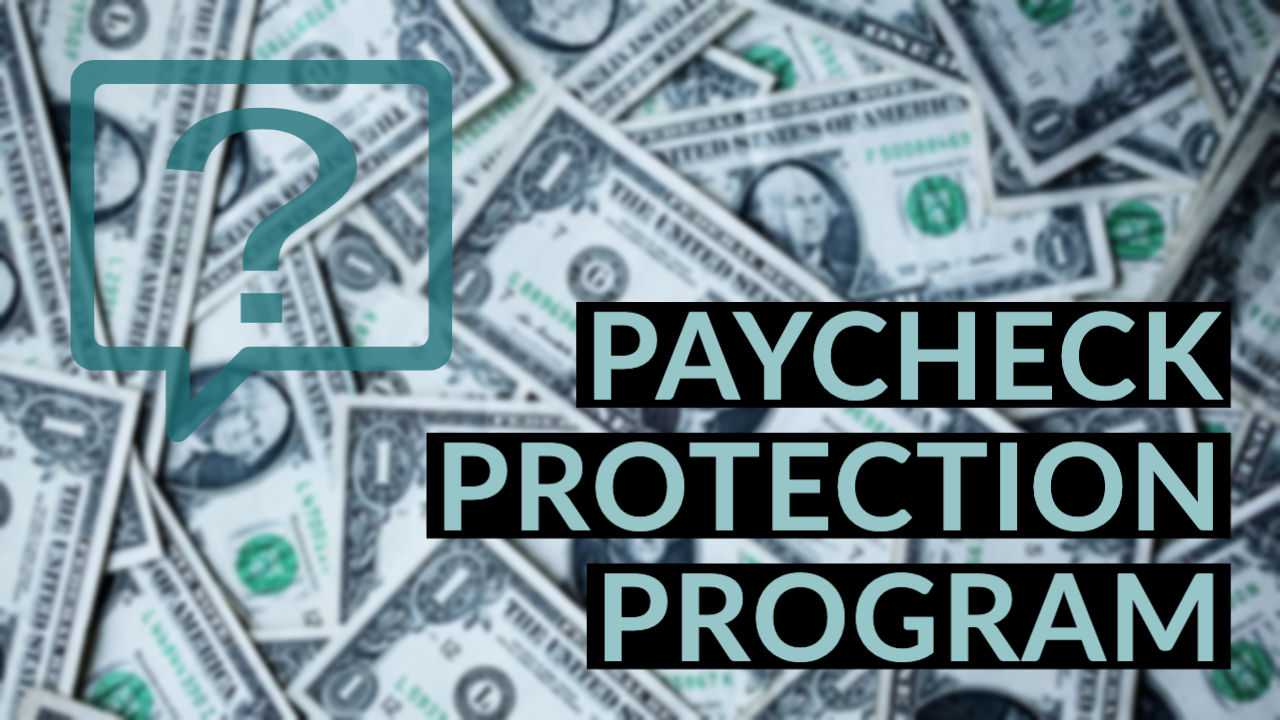If there’s one thing that we learned early on with the $250 billion Paycheck Protection Program (PPP) that Congress approved as part of the CARES Act, it’s that small business owners are struggling to make sense of it all. What exactly does the program cover? When does that eight-week window of coverage exactly start and end? What happens to my application if the funds run dry (which, as of this writing, they have)?
Nationwide Marketing Group recently reached out to Jill Stricklin, an employment attorney with the law firm of Constangy, Brooks, Smith & Prophete LLP, for some guidance and answers to those questions and more. Here’s a look at our Q&A with Jill.
Nationwide: We know that the eight-week window of coverage under the PPP begins the day the first portion of the loan is deposited to the borrower. But how does this relate to pay periods? For example, should borrowers be considering the paychecks issued during this period, or focus on the days worked in this period, even if that means that checks issued will come after the eight weeks has ended? Specifically, if PPP was funded this week, and today is a payroll day, should they count this round of paychecks under PPP or do they only count the days that team members worked this week?
Stricklin: This is an excellent question that’s generated a good deal of debate. The CARES Act states that the loan forgiveness amount should include the sum of “costs incurred and payments made” during the covered period. There are two potential interpretations of this phrase.
 One is that the costs must have been both incurred and paid during the eight-week covered period in order to be included in the amount that is forgiven. Using this interpretation, the employer would only be able to claim payroll costs for the days that team member worked and for which they were paid during the eight-week period.
One is that the costs must have been both incurred and paid during the eight-week covered period in order to be included in the amount that is forgiven. Using this interpretation, the employer would only be able to claim payroll costs for the days that team member worked and for which they were paid during the eight-week period.
The other interpretation is that the borrower may count both payments that were made and costs that were incurred during the eight-week period. In that event, a borrower would not, of course, be able to count the same payroll expenses twice, but could rely on the tracking method that is most favorable in terms of maximizing the loan forgiveness amount.
We’re going to need more guidance, and hopefully the U.S. Small Business Administration (SBA) will include this issue in its upcoming guidance on loan forgiveness. For now, it’s a good idea to track payroll costs and other allowable expenses using both the “costs incurred” and “amount paid” methods.
If a borrower’s business is closed under government order for the first four weeks of their eight-week PPP window, and they bring the team back for those last four weeks, would they be eligible for the loan forgiveness for that portion, or would they lose it all?
Based on the CARES Act’s PPP provisions and the regulations issued by the SBA thus far, you still might be eligible for a reduced amount of loan forgiveness, as long as you spend at least 75% of the PPP loan proceeds on payroll costs.
Although the 75% requirement was not contained in the CARES Act, the SBA included in its regulations the new requirements that (i) at least 75% of the loan proceeds must be used for payroll costs and (ii) not more than 25% of the loan forgiveness amount may be attributable to non-payroll costs. This requirement substantially limits the allowable use of the loan, as well as the amount that potentially might be forgiven, particularly for borrowers who are not paying employees for some or all of the eight-week covered period. Given these new requirements, some PPP borrowers have elected to put their employees back on payroll even if work is not available in order to use all of the proceeds and maximize loan forgiveness.
Whether your loan forgiveness amount will be reduced based on a reduction in the amount of FTEs (full-time equivalent employees) depends on when the reductions were made and when team members are reinstated. Under the CARES Act’s language, your total loan forgiveness amount will not be reduced if (i) your team members were furloughed between February 15 and April 27, and (ii) they are reinstated no later than June 30. In that case, you may take advantage of the “grace period” offered by the CARES Act and your loan forgiveness amount will be calculated as if the FTE reductions had never occurred. Otherwise, the amount of loan forgiveness would be reduced in an amount proportionately using the formula set forth in the statute.
Bear in mind that loan forgiveness is not a given, but instead the statute provides that borrowers must apply to the lender for loan forgiveness. The SBA has not yet issued its promised guidance on loan forgiveness under the PPP. Absent this guidance, even the lenders are reportedly providing contradictory information about how loan forgiveness will work. Regardless, the SBA guidance should be forthcoming and hopefully provide answers.
I also encourage you to communicate with your lender about its expectations for the use of the funds and computation of the forgivable amount. Remember that even if you end up not being able to use all of the proceeds, given the new 75% requirement and any limitations on loan forgiveness, you should be able to repay some or all of the loan amount right away without incurring a pre-payment penalty.
We’ve heard from several of our Members who applied for the PPP before the SBA announced that the funds have been depleted and don’t have an approval yet but have been told by their banks that their applications were submitted to the SBA before the announcement. Are they still being considered for approval, or is that not factored into the available funds?
The SBA has announced that no new applications will be accepted but has offered no guidance on whether funding exists to approve any of the pending applications. It also remains to be seen whether Congress will authorize additional funding for PPP loans and, if so, whether any pending applications from the first round will receive priority treatment. Stay tuned and remain in contact with your lender.
If a business is closed because it’s non-essential, can a business owner bring back their team and pay them, even though they can only do limited work from home, and still be eligible for forgiveness, or does their business have to be open to qualify?
Yes, you may reinstate your team and put them back on payroll, even if they are doing only limited work remotely. Your business need not be open to the public in order to qualify.
What if a business owner is not seeking forgiveness of the PPP funds and instead would like to use the loan proceeds so that they have liquidity for their operation once they reopen? Would they be in violation of the terms of PPP?
We anticipate that the upcoming SBA guidance addressing the loan forgiveness provisions, which should be issued any day, will address questions related to the treatment and use of loan proceeds that are not forgiven. The CARES Act does not specify that loan proceeds must be used during the eight-week period after the loan originates, except to the extent the borrower will be requesting forgiveness. The statute lists several allowable uses for PPP loan proceeds during the overall period of the lending program (February 15 through June 30), including payroll costs, mortgage interest payments, rent payments, utility payments, interest payments on pre-existing debt obligations or refinancing an EIDL loan, in addition to other allowable purposes under Section 7(a) of the SBA.
The recent SBA regulations contain provisions suggesting that at least 75% of the PPP loan proceeds must be used for payroll purposes, regardless of whether portions of the loan are later forgiven. It remains to be seen how the commercial lenders will interpret these provisions or whether the upcoming regulations will provide further guidance on this question. I’d recommend talking with your lender about the allowable uses and keeping an eye out for further administrative guidance.
Government agencies are continuing to provide additional guidance on the Paycheck Protection Program and we expect additional information to be forthcoming. Remember that administrative protocol may vary considerably based upon the commercial lender. It’s always advisable to consult with your lenders, accountants and tax advisors regarding existing applications or loans and the implications for your business.
For more resources and updates around COVID-19, visit our Coronavirus Resources and Best Practices page.




